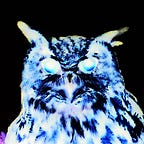Joan Jett: The Queen of Rock and Roll
Most of the women playing rock and roll in the U.S. today do covers of songs by more famous male rock bands or are session musicians in bigger acts.
The best-known examples are the Iron Maidens and Zepperella, two all-female bands who do covers of their more famous namesake bands. There is also a terrific Deep Purple cover band, Strange Kind of Women, based in Italy.
Zepperella are good at what they do and have a fan following, but they are measured by how well they channel Led Zeppelin. Similarly for the other bands of this kind. Some band members have done other projects but struggled for attention. While the cover bands have a fan following, and some of them are highly skilled musicians, they are not treated with any seriousness by the music industry.
Among the elite session instrumentalists, we can count Sara Lee, Tina Weymouth, Gail Ann Dorsey, Jennifer Batten, and a few others. There are, of course, some recent bands that do original stuff and are trending, but the jury is out on whether they will have a lasting impact. Today, the only top-tier rock band in the U.S. led by a woman instrumentalist is Halestorm, founded by Lzzy Hale.
Yet there have always been female rock composers, instrumentalists and band leaders who were as good as the men. If you had stopped the clock around 1980, you would have been justified in thinking that women were well on their way to claiming a big share of the American rock scene.
A number of women had broken through and were not only keeping up with the boys but, in some cases, taking charge. Joan Jett, Chrissie Hynde, Tina Turner, Patti Smith, the Wilson sisters (Heart) and Pat Benatar come to mind.
These women not only broke down barriers to become legitimate stars, but they were as influential as their best-known male counterparts. They often took on subject matter that male artists were hesitant to touch, and some transformed rock's very sound.
Then the pendulum swung back, and women once more found themselves largely consigned to vocals and some songwriting.
As a child, Joan Jett was already fascinated with rock stars. She started guitar lessons when she was thirteen, though her parents and instructor tried to steer her into folk music. As a teenager, she became particularly fascinated with Suzi Quatro, even arranging to hang out at hotels where Quatro was staying during her tours.
“Suzi Q” influenced Jett’s look and, more important, her take-no-prisoners attitude. Jett turned out to be even more badass than Quatro — when asked once whether she had had to endure the sexual harassment inflicted on many of her female colleagues, she replied, “No. I think they were scared of me.”
Jett was recruited into the Runaways as a teenager (all of the members were 15, 16, and 17). She started off as their rhythm guitarist, opposite Lita Ford, then took on the lead vocals over time after the original lead singer left the band. For a history of the Runaways, see my recent post.
After the Runaways disbanded in 1979, Jett continued on under her own name, recording three singles in England, connecting with her long-time producer Kenny Laguna, and eventually recruiting some experienced musicians to form a band. The Blackhearts (with some lineup changes over the years) are still touring with her and have been inducted into the Rock and Roll Hall of Fame.
“Bad Reputation” was Jett’s first hit after leaving the Runaways. She and her producer, Kenny Laguna, had to form their own label to release “Bad Reputation” after being turned down by every existing label they approached (some 23 or more labels in all). After “I Love Rock and Roll,” many of those labels came begging for a second chance. Too late, suckers.
Here is Jett doing her cover of “I Love Rock’n Roll.” The original, by the Arrows, would have been forgotten completely if not for Jett. Her version went to #1 in 1982, making her a global star.
She’s singing about picking up a young guy in a bar, which is already pretty radical. Add in her look and her snarl, and it’s a game-changer. At the start of the video, you’ll hear the end of “Bad Reputation” playing in the background before she enters the joint. (I previously included this in a post on cover songs that were better than the originals.)
One more by Joan Jett, and my favorite. This was also one of her bigger hits in the late 80s. A lot of women sing songs about men who can’t love them back. In this case, Jett is singing about a woman. Just sayin’. (Jett confirmed in 2018 that she is gay.)
Sources:
The Runaways website
Excerpts and clips from “Edgeplay”, a documentary about the Runaways
Laura Kelly, 2022 “Tragic Details about the Runaways” https://www.grunge.com/284624/tragic-details-about-the-runaways/
The Guardian, 2016 Article on Cherie Currie: https://www.theguardian.com/music/2016/apr/21/it-was-the-end-of-a-nightmare-cherie-currie-on-putting-the-ghosts-of-the-runaways-to-rest
Joan Jett: Rock and Roll Hall of Fame induction write-up by Jaan Uhelzski https://www.rockhall.com/sites/default/files/2019-11/Joan%20Jett%20%26%20The%20Blackhearts_2015.pdf
“Joan Jett Bio” Rolling Stone, Oct. 2011 https://web.archive.org/web/20111031122121/http://www.rollingstone.com/music/artists/joan-jett/biography
Lucy Mangan, 2021 Review of “Look Away” in the Guardian https://www.theguardian.com/tv-and-radio/2021/sep/13/look-away-review-horrifying-stories-of-abuse-at-the-hands-of-male-rock-stars
Wikipedia articles on The Runaways, Joan Jett, Lita Ford
